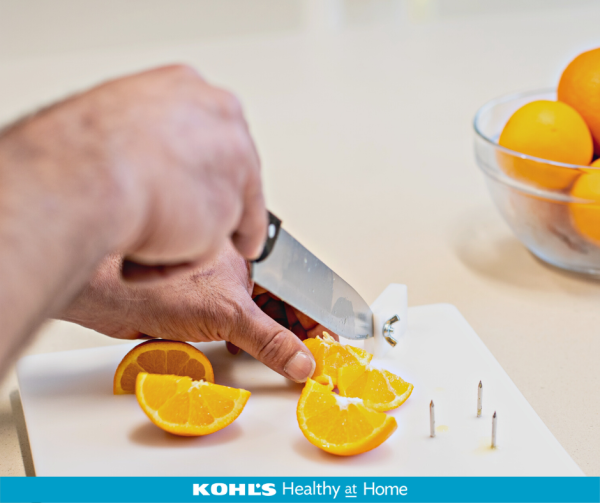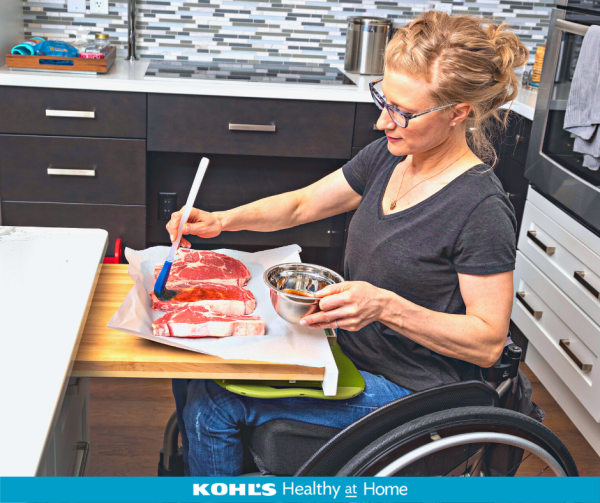April 26, 2022
Six Tips and Tools for an Inclusive Family Kitchen
Learn how to make your mealtimes more accessible and inclusive with expert insights from our friends at National Center on Health, Physical Activity and Disability (NCHPAD).
Inclusive family kitchens are places where people feel welcome, safe, and valued as they prepare and enjoy meals together. How can you make your kitchen inclusive? Making sure cooking and dining are accessible for all family and friends is a great way to start. Check out these six tips and tools that you can try in your home.
1. Find out how each person likes to interact.
Family meals are a chance to check in with each other, share stories, and develop social-emotional skills. How we communicate can make a big difference in the quality of those conversations. Consider these communication resources from NCHPAD to boost your knowledge and build connections!
2. Use adapted cooking tools to prepare nutritious meals.
Fruits and veggies are nutritious and delicious ingredients that often involve chopping, slicing, or dicing. But working with sharp tools can be tricky – especially for home cooks with limb loss, joint pain, or limited dexterity. Try adapted tools like a pronged cutting board and pivot knife to hold your ingredients in place while you prepare your next culinary masterpiece.
3. Navigate vision loss with a well-planned kitchen.
A well-planned kitchen can ease the stress that may accompany cooking with vision loss. It helps to label items with large print and/or Braille and store tools and utensils in a consistent, convenient place. The right kitchen tools can help, too. Try wearing long oven mitts to protect upper arms, and keep heat-safe tongs near the oven. These are just a few of the tips and tools for navigating vision loss that can make a big difference. You can also arrange the cooking and dining space so that family members can safely use a mobility aid when needed.
4. Mix it up with non-slip mats and stirring devices.
Whether you’re cooking with one hand or need support in a slippery situation, place a non-slip kitchen mat underneath your mixing bowl as you stir. You can find these mats at a home supply store or online. You can even use a pastry rolling mat as a non-slip surface. Or, let technology do the work with an electric whisking device – they stir and stay upright in a hot pan! Find more tips for cooking with one hand from NCHPAD.
5. Get grilling with accessible techniques.
As we transition to warmer months, many of us are eager to enjoy the outdoors and make fun memories at family cookouts. Use accessible grilling techniques and adapted tools to get the most out of your next barbecue. For example, a large, heat-safe cutting board can shield your lower body and provide an easy-to-reach prepping surface while you grill from a wheelchair or chair. See more accessible grilling tips!
6. Make mealtimes enjoyable for everyone with adapted utensils and dinnerware.
“Adapted” does not have to mean expensive or high-tech. In fact, you might already have similar dinnerware in your cupboard! Look for plates with raised edges and utensils with large, non-slip handles. Loop forks and spoons are also convenient for some folks who have limb loss, because they can comfortably secure a utensil to their upper arm.
Inclusive family kitchens can take many forms. When people feel included and have the tools to participate in family mealtime, everyone is more likely to experience the benefits of nutritious foods and family connections.
Learn more about inclusive family health from our friends at NCHPAD, and get more Healthy at Home resources at KohlsHealthyAtHome.org.







